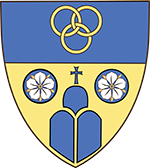Oblate History
Who can become an Oblate?
The word “oblate” means “one who is offered”. Its monastic usage goes back to the Rule of St Benedict, chapter 59, “On the Sons of Nobles and of the Poor Who Are Offered.” It was the custom in St Benedict’s time (sixth century) for parents to offer their young children to a monastery. These oblates would be permanent members of the community.
Within a couple of centuries, Church legislation made sure that these child oblates would have a choice, when they reached a suitable age, of whether to become monks or not. Thus “oblates” became a separate category of people who were associated with a monastery but were not monks. This must have taken various shapes over the centuries, but because the Oblates were associated with particular monasteries, there are few general statements of what the status and obligations of Oblates were.
For example, the story is told that Holy Roman Emperor St Henry II (died 1024) made the monastery of St Vanne at Verdun accept him but was immediately commanded by his Abbot to continue his life as Emperor. Thus he was an oblate in a certain sense and is in fact a patron saint of Oblates (feast July 15). Another patron of Oblates is St Frances of Rome (died 1440), who founded a community of Oblates. From these and other indications we gather that the basics of what we now know of Oblates and of their existence.
In the nineteenth century revival of monasticism, attention was paid to the Oblates. Pope Leo XIII (died 1903) included legislation regarding Oblates in his efforts to organise the Benedictines.
In the later twentieth century, as monasticism became more and more counter-cultural, there was a revival of interest in the Oblates, with non-Catholics like Esther de Waal and Kathleen Norris becoming Oblates and writing popular books about their experience.
In this century several international Congresses of Oblates were organised by the Abbot Primate in Rome. In fact, even while many monasteries are in decline, their Oblates are flourishing, showing the truth of the Benedictine motto Succisa virescit (“cut down, it still grows green”).

